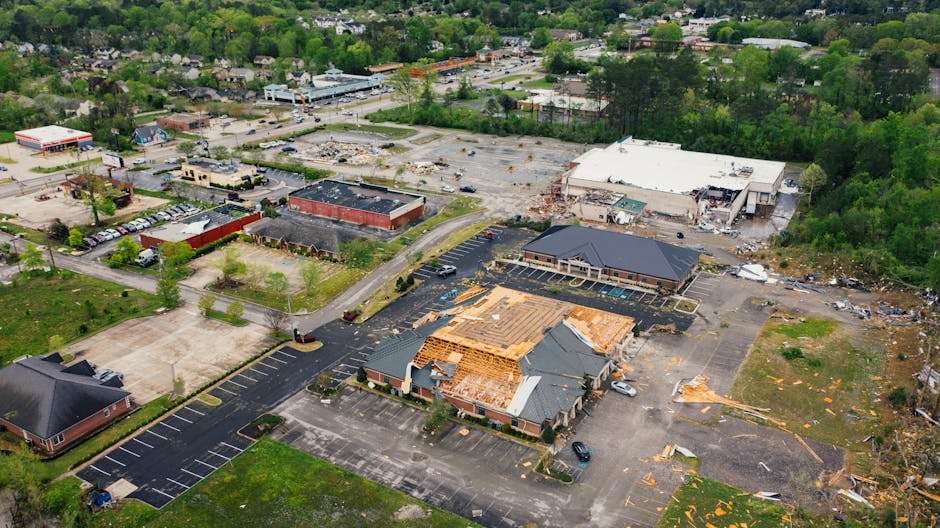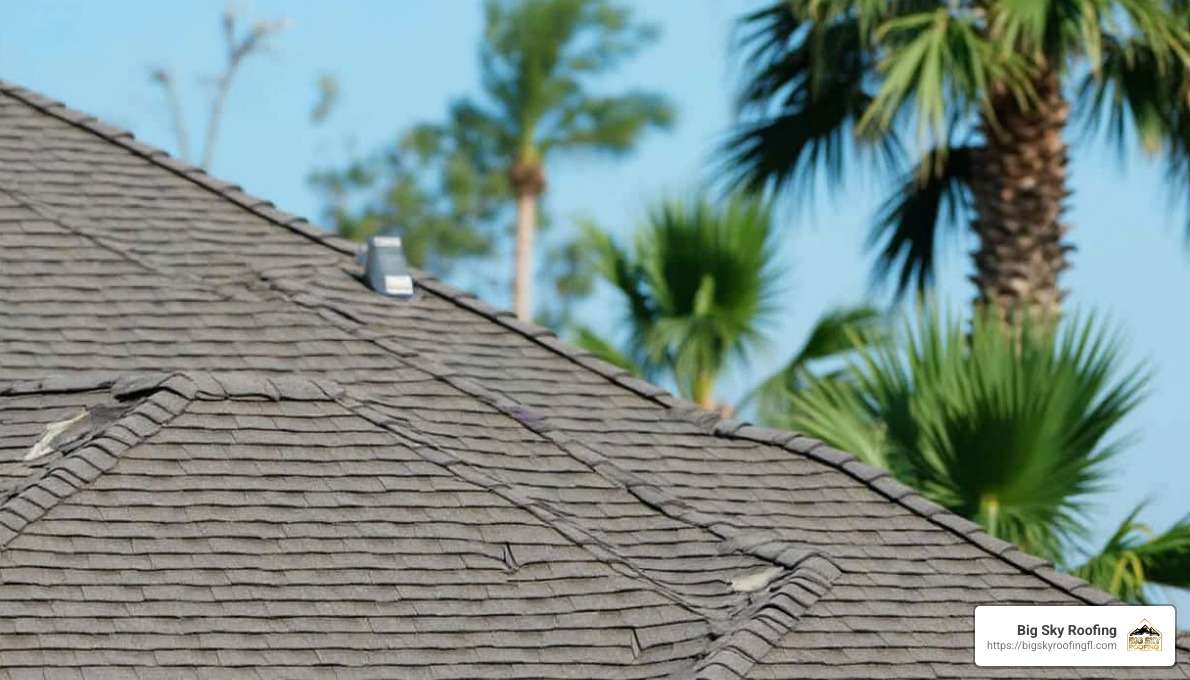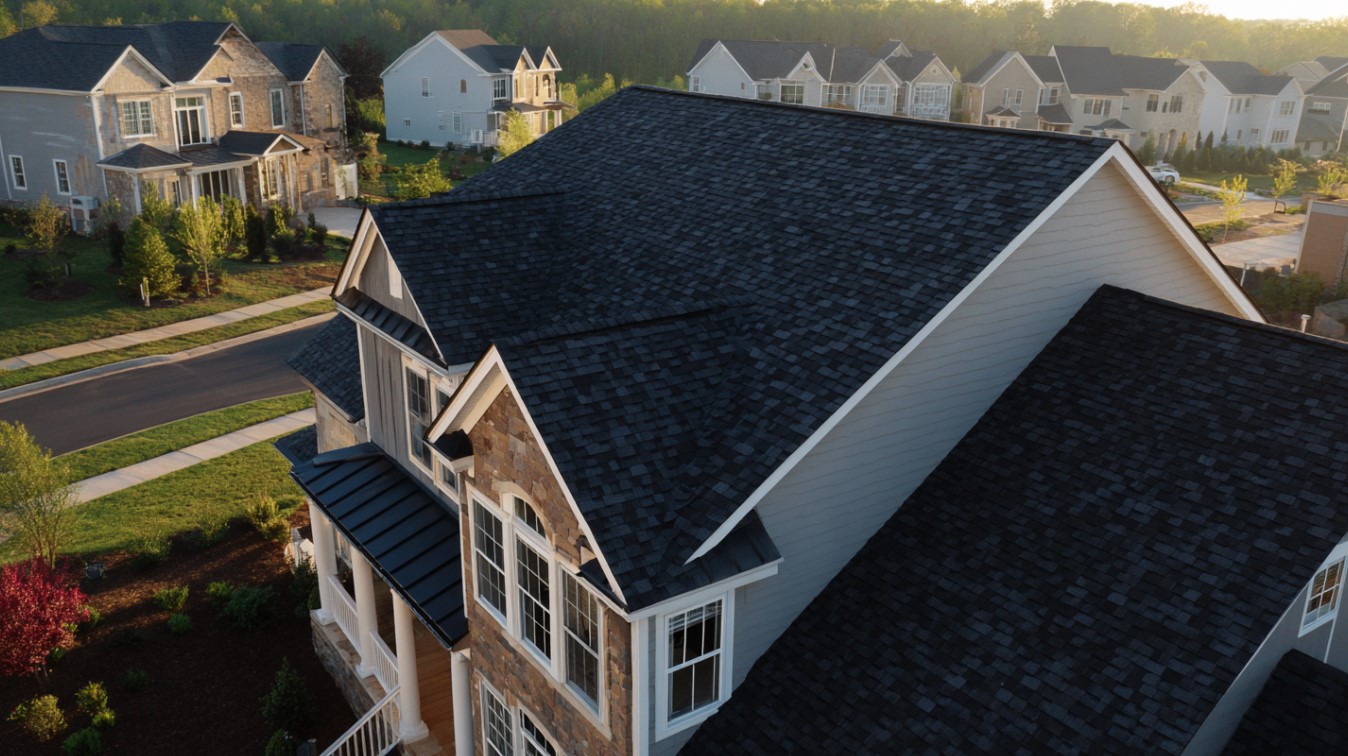Wind vs. Roof: How to Detect Damage and Protect Your Home
•
Written By
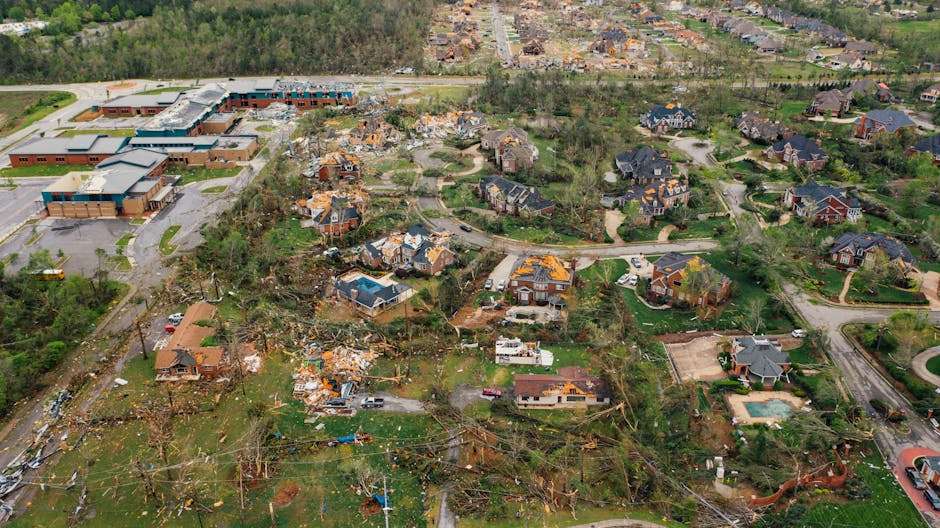
How to Spot Wind Damage on Your Roof
Wind damage roof can be a real headache for homeowners, especially in Florida’s storm-prone counties like Sumter, Lake, Citrus, Hernando, Orange, and Marion. When fierce winds hit, roofs can suffer significant damage. Look out for:
- Missing Shingles: Often the most visible sign. If you notice bare spots or shingles on the ground, your roof might be compromised.
- Curled or Lifted Shingles: Winds can loosen shingles, causing them to curl or lift, which allows water to seep underneath.
- Flashing Damage: Check around chimneys and vents. Loose flashing can lead to leaks.
- Debris Impact: Broken branches or other debris can dent or crack shingles, leading to further issues.
Homeowners in Florida need to be vigilant, as these signs can lead to bigger problems if not addressed promptly. Understanding these indicators will help in taking quick action to protect your home.


Quick wind damage roof definitions:
– can i claim for storm damage to my roof
– how to claim storm damage to a roof
– storm damage roofing
Understanding Wind Damage to Roofs
How Wind Causes Roof Damage
Wind can wreak havoc on roofs through a variety of mechanisms. The most common is uplift, where wind forces lift shingles and even parts of the roof structure. This happens when wind pressure builds beneath the edges or seams of the roof.
Additionally, flying debris can cause impact damage, leading to cracks or punctures in the roofing material. This combination of wind pressure and debris impact is why roofs are particularly vulnerable during storms in Florida.
Common Types of Wind Damage
Wind damage manifests in several ways:
– Missing Shingles: Often the first visible sign of wind damage.
– Curled Shingles: Shingles can curl due to wind pressure and lose adhesion.
– Roof Leaks: Resulting from lifted shingles or damaged flashing.
– Granule Loss: Visible as bare patches on asphalt shingles, indicating erosion of the protective layer.

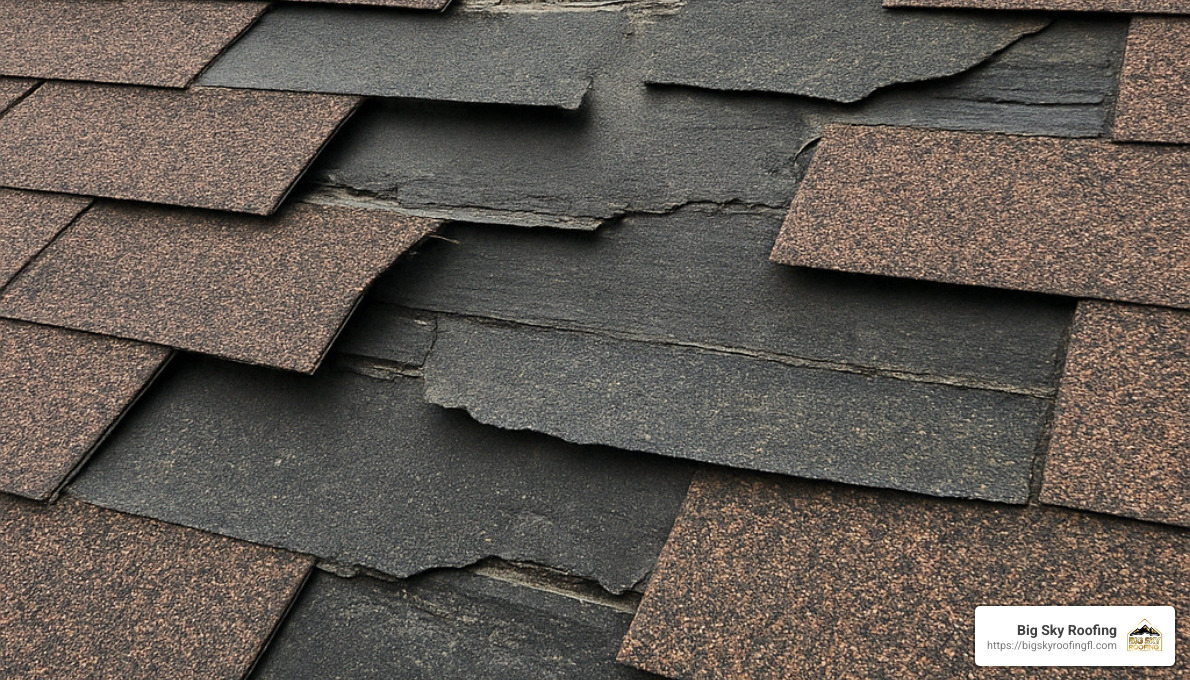
Signs of Wind Damage on Your Roof
When strong winds sweep through Florida, especially in areas like Sumter, Lake, Citrus, Hernando, Orange, and Marion counties, your roof can take quite a beating. It’s crucial to recognize the signs of wind damage early to prevent further issues. Let’s explore what you should be looking for, both outside and inside your home.
Exterior Signs of Wind Damage Roof
Start your inspection by taking a close look at the exterior of your roof. The most obvious indicator of a wind damage roof is missing or lifted shingles. If you notice bare patches or shingles that seem to be standing at attention, it’s time to act.
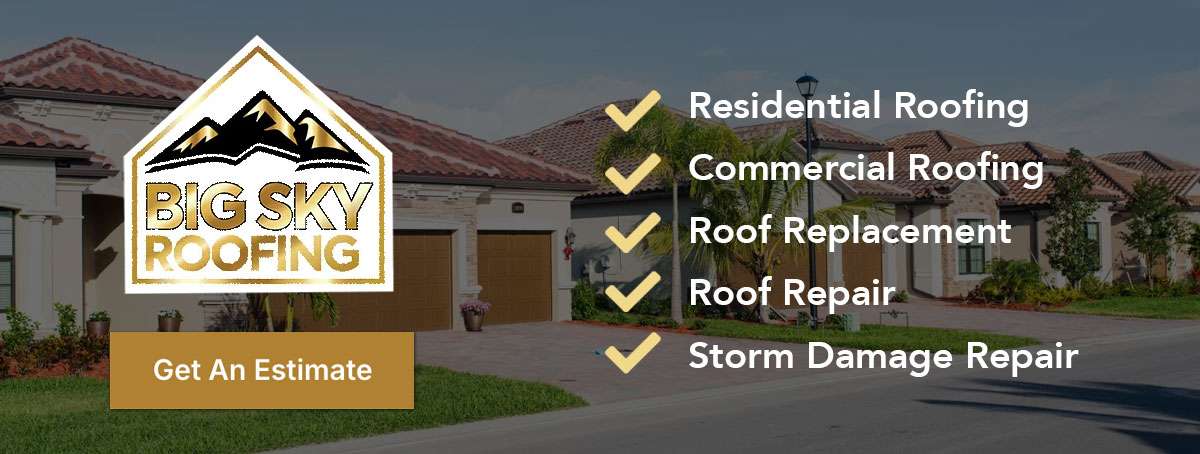
Also, check the flashing around chimneys or skylights. These areas are often vulnerable and if the flashing is damaged or loose, it could lead to leaks. Don’t overlook any debris on the roof. Fallen branches or other objects might not just be resting there; they could have caused hidden punctures or dents in the roofing material.


Interior Signs of Wind Damage Roof
Moving inside, keep your eyes peeled for water stains on ceilings or walls, especially after a storm. These stains are like little warning signs that water might be sneaking in through a compromised roof.
Take a peek in your attic as well. Look for attic leaks or any moisture that shouldn’t be there. If you spot daylight coming through the roof, that’s a definite red flag.
Lastly, be alert for mold growth. Mold loves moist areas, so if your roof has been letting water in, mold might be setting up camp. This can be a sign of prolonged water infiltration, which is never a good thing and can lead to bigger problems down the road.
Being aware of these signs, both inside and out, can save you from a world of trouble. If you notice any of these issues, it might be time to call in the experts at Big Sky Roofing. They’re seasoned pros in tackling these stormy challenges with skill and care.
How to Inspect Your Roof for Wind Damage Safely
The I.O.U Method Explained
When it comes to checking for a wind damage roof, it’s crucial to do it safely and systematically. That’s where our I.O.U (Inside, Outside, Up the Ladder) method comes in handy. First, head Inside your home to check the attic. Look for any signs of moisture or leaks—if your attic is playing peek-a-boo with sunlight or you spot drips, it’s time for a closer look.
Next, step Outside and take a walk around your home. From the ground, inspect your roof’s condition. Keep an eye out for any visible damage like missing shingles or debris.
Finally, if you’re feeling brave and it’s safe, you can go Up the Ladder. This gives you a closer view, but remember, safety first! If you feel unsure, it’s perfectly fine to leave this part to the pros.
For more details on protecting your roof in the Sunshine State, check out more info about Florida Roof Wind Mitigation.
Safety Tips for Roof Inspection
Safety is the name of the game when inspecting your roof. Use binoculars for a thorough inspection from the ground. They’re handy for those tricky areas that are hard to see with the naked eye.
Avoid the temptation to climb your roof. It might be calling you, but trust us, leaving that to professionals is the best idea to prevent any unplanned trips to the ER.
And remember, when in doubt, opt for professional assistance. Experts can offer a detailed inspection without any risk to you, ensuring your roof stays in tip-top shape.


What to Do If You Detect Wind Damage
Finding wind damage roof issues can be stressful, but acting quickly can save you from larger headaches down the road. Here’s a warm guide on what steps to take next.
Document the Damage
The first step, once you uncover any damage, is to document everything. Grab your camera or smartphone and snap photographs of all visible damage. This includes both the exterior and the interior signs, like water stains or attic leaks. Be sure to make notes of your observations, including the date of the storm and any estimates of wind speed. This information will be invaluable for insurance claims.
Temporary Repairs to Prevent Further Damage
Don’t worry if the damage looks overwhelming. There are simple steps you can take to prevent things from getting worse. Cover exposed areas using tarps to shield them from rain, helping to avoid further water ingress. For broken windows or doors, consider using board-up services to secure your home. And remember, professional help is just a call away. Reach out to roofing experts like Big Sky Roofing for urgent repairs. They’ve got over 25 years of experience in helping folks just like you in Sumter, Lake, Citrus, Hernando, Orange, and Marion counties. After all, a little preventive action can go a long way in keeping your home safe.
Navigating Insurance Claims for Wind Damage Roof
Dealing with a wind damage roof can be stressful, but understanding your insurance policy is key to easing that burden. Most homeowners insurance policies cover wind damage, but the specifics can vary. You might come across terms like ACV (Actual Cash Value), which means your insurance will pay for the roof’s depreciated value. On the other hand, RCV (Replacement Cost Value) covers the full cost of replacing your roof, minus the deductible. Understanding these terms helps you know what to expect when you file a claim.
When it’s time to file an insurance claim, prompt action is crucial. Contact your insurer as soon as you notice damage. This ensures your claim is on their radar. Provide thorough documentation, including photos of the damage and any repair estimates you’ve received. This will help paint a clear picture for the insurance company. As you work through the claims process, you’ll likely interact with insurance adjusters. It’s important to communicate effectively, ensuring they understand the extent of the damage. You want them to see what you see, so be detailed and clear in your explanations.
Big Sky Roofing is here to assist homeowners in Sumter, Lake, Citrus, Hernando, Orange, and Marion counties, ensuring you have the support needed to steer this process smoothly. With over 25 years of experience, we emphasize superior craftsmanship and customer service. If you need help or advice, don’t hesitate to reach out. We’re here to help you get your home back to its best shape.
Protecting Your Home from Future Wind Damage
When it comes to keeping your home safe from the relentless winds of Florida, a proactive approach is key. Here’s how you can strengthen your roof against wind to sleep a little easier during storm season.
First, consider wind strapping—a technique that can significantly improve the bond between your roof and the rest of the house. It’s like giving your home a sturdy pair of suspenders, ensuring everything stays put even when the wind tries to blow it away.
Next up, think about shingle reinforcement. By using extra nails or strong adhesives, you can keep those shingles from flying off like frisbees in a hurricane. It’s a simple step that can make a big difference when the wind starts howling.
Let’s not forget about weather seals. Installing gutter aprons and drip edges creates a tight seal that helps keep the elements out. It’s like putting a raincoat on your house, protecting it from all sides.
For more tips on choosing the right materials, check out Hurricane Resistant Roofing Materials.


And let’s not overlook the importance of regular roof maintenance and inspection. Keeping your trees trimmed ensures those pesky branches don’t give your roof an unwanted haircut. Gutter cleaning is another must; think of it as giving your roof a good rinse, allowing water to flow freely and not pool where it shouldn’t.
Schedule regular inspections with professionals like Big Sky Roofing to catch any sneaky wear and tear before it becomes a costly problem. This simple step is like having a regular doctor’s check-up for your roof, ensuring it’s in tip-top shape and ready to face whatever Mother Nature throws its way.
By taking these steps, you’re not just protecting your roof; you’re safeguarding your entire home from the potential havoc of wind damage. And remember, a well-maintained roof is a happy roof!
Frequently Asked Questions about Wind Damage Roof
How strong does wind have to be to damage a roof?
Wind doesn’t need to be hurricane-level to cause trouble for your roof. In fact, even winds as low as 45 miles per hour can start to loosen shingles, especially if your roof is older or already a bit worn. But when winds hit 60 miles per hour or more, that’s when you really need to watch out, as such speeds can lead to significant damage. For more precise classifications of wind speeds and their impacts, check out the Wind speed classifications by the National Hurricane Center.
Does homeowners insurance cover wind damage to roofs?
Most homeowners insurance policies do cover wind damage, which is a relief for those of us living in wind-prone areas like Sumter, Lake, Citrus, Hernando, Orange, and Marion counties. However, the specifics can vary quite a bit. It’s crucial to dig into your policy details to understand what’s covered and what your deductibles are. A quick chat with your insurance agent can clear up any confusion and ensure you’re well-prepared when the next storm rolls in.
What roofing materials are best for high winds?
When it comes to materials that stand up to strong winds, metal roofing and premium asphalt shingles are often top choices. Metal roofs are like the superhero capes of roofing materials—super sturdy and reliable. Premium asphalt shingles, on the other hand, provide excellent wind resistance while maintaining a classic look. Both options are designed to handle the blustery conditions often experienced in Central Florida. For further insights into wind-resistant choices, you might want to explore Hurricane Resistant Roofing Materials.
With over 25 years of experience, Big Sky Roofing is here to help guide you through all things wind damage. Whether you need repairs, a full roof replacement, or just some friendly advice, our team is ready to help keep your home safe and sound.
Conclusion

Living in Central Florida means your home is often on the front line against fierce winds and storms. Protecting your wind damage roof begins with regular check-ups and a bit of TLC. Think of it like giving your roof a health check-up; it might not be glamorous, but it’s definitely necessary!
Routine inspections and maintenance can keep your roof in top shape. And remember, you don’t have to do it alone. The pros at Big Sky Roofing are always ready to lend a hand. With over 25 years of experience and a dedication to superior craftsmanship, they’re your go-to for everything from minor repairs to full roof replacements.
Whether you’re in Sumter County, Lake County, Citrus County, Hernando County, Orange County, or Marion County, their expert team is just a call away. For more tips on handling storm damage, don’t forget to visit our Storm Damage Roofing page.
Taking care of your roof isn’t just about avoiding leaks; it’s about peace of mind during storm season. So, let’s keep those shingles snug and secure for the next big bluster!

